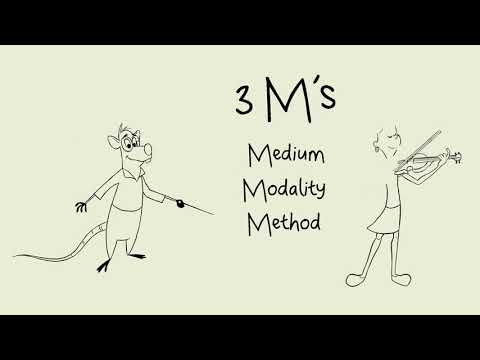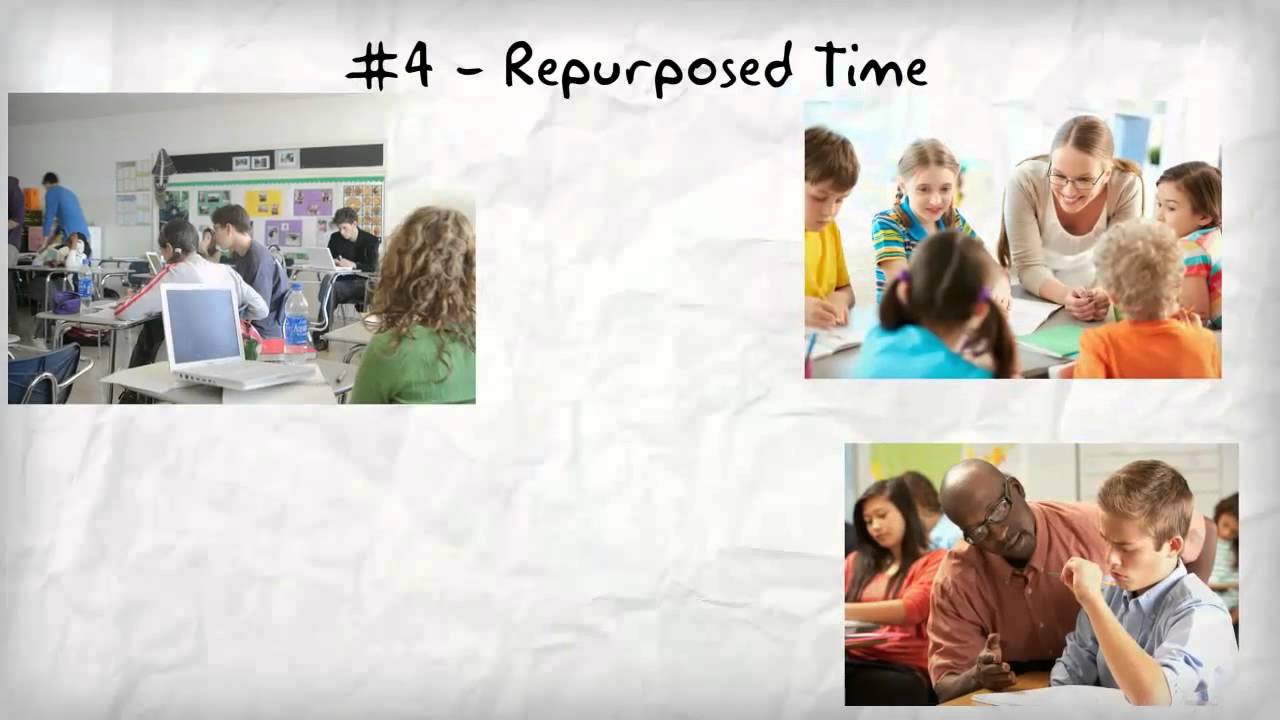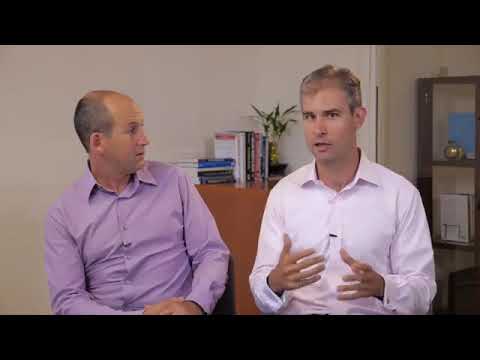1.1 Blended Teaching Foundations
.jpg)
“Combine one flavor with another, and something new was created!” −Remy the Rat, Ratatouille1
1.1.0 What is Blended Learning?
Blended learning is the strategic combination of online and in-person instruction. According to the Christensen Institute, students in these classrooms learn “in part online, with some element of student control over time, place, path, and/or pace.”2 This type of teaching requires more than just classroom technology integration because it involves online learning as a part of the student experience. Because of this, you are required to have a broader set of skills than you would need for the typical classroom.
Definition: Blended Learning

Blended Learning is the strategic combination of online and in-person learning. A common K-12 definition adds that the blend needs to provide students with some control over time, place, path, and/or pace.
We often hear the question, “Is online learning actually effective in K-12 contexts?” The short answer is that it is or can be, but the longer answer is that this is the wrong question to ask. No one would ask, “Is learning in a K-12 classroom actually effective?” While the modality, or environment, in which learning takes place is important to providing us with different opportunities for teaching, what we do in those environments has a much more direct impact on student learning. Consider the interplay of the 3Ms– Media, Method, and Modality – as described in Video 1.1. Media are the tools we use to teach our students: tablets, laptops, textbooks, whiteboards, etc. Method is how we actually use those tools and the affordances of the environment together to foster student learning. So, a better question to ask is, “What can I do to teach effectively using the online or blended space?”
Media, Method, Modality
Video 1.1 (5:31) http://bit.ly/btb-v010

What to Look For: Which of the 3Ms has the most direct impact on student learning?
To teach using effective blended methods, you need to be able to combine online and in-person learning activities strategically. This can be difficult because both methods of teaching have different strengths and weaknesses. Our goal as teachers is to determine how to effectively combine online experiences with existing classroom-based activities to maximize student learning. As described in Video 1.2, online and in-person experiences should be integrated so that they inform each other and are not isolated from one another.
Blending vs. Tech Integration
Video 1.2 (7:30) http://bit.ly/btb-v092

What to Look For: How does blended learning differ from classroom technology integration?
1.1.1 Why Blend?
There are three main reasons why teachers might choose a blended teaching approach:
- Improved Student Learning. Blended teaching can enable instructional strategies not practical or possible in traditional settings. These strategies can lead to improved student engagement and learning outcomes.
- Increased Access and Flexibility.Blended teaching can provide increased flexibility and access to learning experiences by extending learning beyond the confines of the classroom.
- Increased Cost Efficiency. Blended teaching can also lead to some cost efficiencies in terms of time and money for both teacher and students.
Though these benefits can improve practices, they cannot be gained by simply adding the online space to already existing in-person instruction. It is important to remember that blended learning is the strategic combination of online and in-person instruction. You need to make sure that the online space talks to or informs what happens in the in-person space, and that the in-person space talks to or informs what is happening in the online space. Adding a learning application to your in-person classroom does not create quality blended teaching. Video 1.3 takes a closer look at elements important to quality blended teaching.
Video 1.4 outlines six pedagogical challenges (six Ps) that you, theteacher, can address in the classroom to help improve student learning: pacing, preparation, participation, personal interaction, personalization, and place.
High Quality Blending
Video 1.3 (8:59)

What to look for: What are some elements that characterize high quality blended learning?
The 6 Ps of Blended Teaching
Video 1.4 (2:40) http://bit.ly/btb-v005

What to Look For: Which of these six challenges do you experience in your classroom?
In addition to the 6 Ps described in the video, we have added a seventh P, Practice with Feedback. The following is a summary of The 7 P's.
- Participation — During an in-person class discussion, only one person can share his or her ideas at a time. Teachers often try to remedy this difficulty by using small group discussions to increase participation, but even in small groups only one person can share his or her ideas at a time. Even when everyone gets the opportunity to share, one student may dominate the conversation resulting in groupthink or in one student’s ideas getting more attention than another’s. Online discussions can help to equalize the amount of student participation.
- Pacing — In the in-person space the class is expected to move as a whole when a unit or lesson has concluded.Within this aspect of blended teaching, students can move at their own pace, advancing when they have met specific benchmarks.
- Personalization — It is difficult to personalize learning to every student’s interests, skills, and goals. Online learning components can help teachers provide students with more agency in directing their own education.
- Place — The online space is much more flexible than the in-person space. Using online instruction allows students to learn wherever and whenever is most beneficial to them, whether that be at school before, during, or after class, or at home when they get back from their late-night practices, rehearsals, or part-time jobs.
- Personal Interaction — In the traditional classroom, instruction is often focused on the whole class. This practice helps monitor student behavior and manage the flow of classroom activities. However, in a blended environment, students are engaged in learning online, and you can spend more time conferencing and helping individual students.
- Preparation — Blending allows students to have access to course materials through the online space, even before or after class time, providing students with additional opportunities to learn. This can help address some of the difficulties teachers often face, such as having students come to class unprepared or leaving class without having access to the materials needed to finish their work.
- Practice with Feedback— You know that feedback is an important part of the learning process; however, it can be difficult to provide students with relevant, immediate feedback on all their work. Often, elements of online learning provide students with the opportunity to receive immediate feedback through responsive assessments and interactive activities.

Blended teaching provides opportunities for students to develop knowledge and skills that will be essential to their future success. Because professions and society are changing so rapidly, it’s hard for us to know what skills students will need in four to five years, much less in fifteen to twenty-five years. However, The Partnership for 21st Century Learning (http://www.p21.org/) argues that at the time of graduation, all students should possess The Four Cs: Communication, Collaboration, Critical Thinking, and Creativity (see Figure 1.2). The Four Cs are not taught in addition to the course content. Rather, these skills are developed when students are learning the course content. To achieve this goal, you may need to change how you approach teaching and how your students approach learning. Blended classrooms can play an important role in making this change.
.png)
Blended teaching is an excellent way to provide access and flexibility to student learning. For example, consider students who miss class time because they are ill or are participating in an extra-curricular activity. The integration of online learning options and in-person class activities could allow these students the flexibility they need to balance health and academics or academics and other activities that are a priority to them.
1.1.2 What Does Blended Learning Look Like?
It’s important to remember that there are almost an infinite number of ways to blend online and in-person teaching. That said, there are many different models of blended teaching that are commonly used by teachers. It is valuable to learn about the different models and to select the specific approach that fits well with your own teaching philosophy, school culture, and student needs. Figure 1.2 shows a spectrum of models. Each model has strengths and limitations and works well for different schoolcontexts and student needs. We will provide more depth for each model in Chapter 2.
.png)
1.1.3 What Competencies are Needed?
As illustrated in the image at the beginning of this chapter, this book will address four core competency “pillars” that you will need to build as you develop your ability to teach in a blended environment. These areas are critical to success when it comes to blended teaching:
- Online Integration— Integrating online and in-person activities
- Data Practices— Using data practices to inform teaching
- Personalization— Facilitating personalized learning for students
- Online Interaction— Facilitating online learning interactions
Each chapter of this book will focus one of the competencies. This book may provide you with some help in developing many of these technology skills, but that is not its purpose. The purpose of this book is to help you use the skills you have already developed to begin blended teaching. If you need guidance in developing some of the technology skills needed for blended teaching, online tutorials are usually just a search engine click away.
Reference List
1. Bird, B. (Director). (2007). Ratatouille [Film]. Pixar Animation Studios; Walt Disney Pictures.
2. Clayton Christensen Institute. (n.d.). Basics. Blended Learning Universe. Retrieved from https://www.blendedlearning.org/basics/
5. Partnership for 21st Century Learning. (2019). Framework for 21st Century Learning. Battelle for Kids. https://www.battelleforkids.org/wp-content/uploads/2023/11/P21_Framework_Brief.pdf
6. Clayton Christensen Institute. (n.d.). Basics. Blended Learning Universe. Retrieved from https://www.blendedlearning.org/basics/